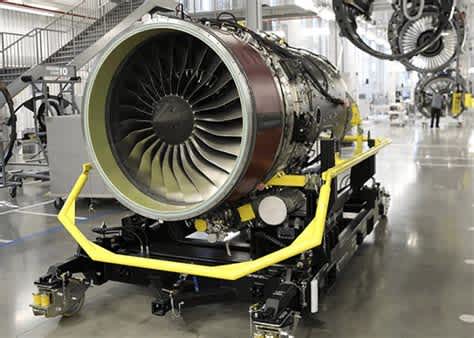Spanish company ITP Aero has achieved a significant milestone in aerospace engineering by implementing 3D printing technology to manufacture high-temperature engine components.
Spanish company ITP Aero has achieved a significant milestone in aerospace engineering by implementing 3D printing technology to manufacture high-temperature engine components. This breakthrough positions the company as a leader in innovation within the sector, enhancing efficiency, reducing environmental impact, and optimizing manufacturing processes.
3D Printing: A Milestone in Aviation
ITP Aero has utilized selective laser melting additive technology to develop and certify the blades for the TP400 engine, used in the Airbus A400M military aircraft. This process enables the creation of highly complex and precise components, something difficult to achieve with traditional methods.
Photo: Prototype of the UltraFan engine manufactured by ITP Aero using 3D printing.
Advantages of Additive Manufacturing
3D printing technology has transformed various industrial sectors, including aerospace, thanks to its multiple benefits:
- Material Reduction: Saves up to 25% of materials compared to conventional processes.
- Complex Geometries: Enables the production of components with designs optimized for weight and performance.
- Environmental Sustainability: Minimizes waste generated during production.
In 2021, ITP Aero designed and manufactured the Tail Bearing Housing (TBH) for Rolls-Royce’s UltraFan engine using 3D printing. This component, one of the main structures of the engine, exemplified efficiency in material usage and precision.
Structural Component Certification
In July 2024, ITP Aero became the first aircraft engine company to receive certification from the European Union Aviation Safety Agency (EASA) for a structural component manufactured using 3D printing. This recognition highlighted the rear structure blades of the TP400 engine, consolidating the company’s ability to establish standards and specifications in additive manufacturing.
Photo: Blades of the TP400 engine manufactured using 3D printing technology.
A Future of Innovation and Sustainability
ITP Aero’s use of 3D printing not only improves efficiency and reduces production costs but also reinforces the company’s commitment to sustainability. By reducing material waste, the company contributes to a more environmentally friendly industry.
Furthermore, ITP Aero continues investing in research and development to expand the application of this technology to other programs and components, cementing its position as a pioneer in transitioning toward a more innovative and sustainable aerospace industry.
Photo: Prototype of an aerospace component manufactured using 3D printing.
Conclusion
ITP Aero’s advancements in additive manufacturing mark a turning point in the aerospace industry. With international certifications and a focus on sustainability, the company demonstrates that innovation is key to addressing current challenges and building a more efficient and environmentally conscious future.
